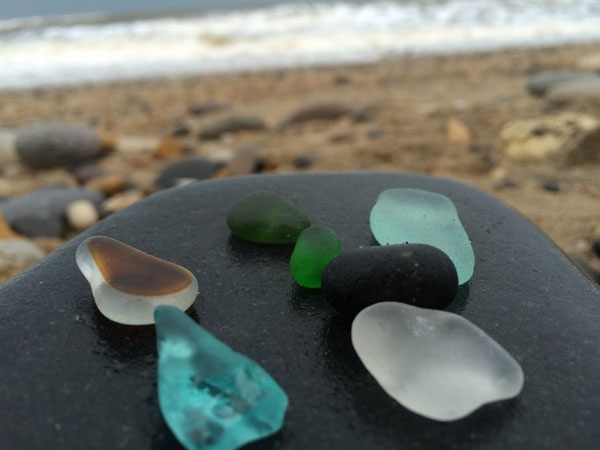River stone, sea glass, clouds in the sky…
These are just a few things that come to mind when I think about one of my all-time favorite words, elegance. I won’t go so far as reserving its use for only transcendent observations, but it certainly holds a rarified place in my vernacular. If you’ll just bear with me and give me the opportunity to impose my own definition of true elegance upon you for a moment, I’d appreciate it.
Something elegant isn’t just beautiful, or classically proper, or even necessarily attractive to the naked eye. To me, elegance can be something said, something seen, or even something felt. It is most often something mature. For example, I never think of a newborn baby as elegant, as precious as they are (save my thoughts about God’s hand in creating new life). However, I often think of the elders in my congregation as exuding elegance. As a river stone’s edges have been smoothed out over years of tumbling about, an elegant person is refined in a way that only life experience can impart.
Of course, when I begin thinking about elegance in its greatest form, I immediately think of my Lord and Savior, Jesus Christ. Scars and all, He is the most elegant Person to ever grace this earth. Yet, the Bible describes Him as, “like one from whom men hide their face” (Isaiah 53:3). It goes to show that elegance typically has very little to do with commonly accepted definitions.
The more we learn from the Word of God, the more we realize how elegant God is, in particular, how He sanctifies us. In doing so, we begin to esteem things foreign to social norms. We appreciate it all the more when our own sharp edges, the caustic parts of life, have been smoothed out over time.
 Elegance is settling.
Elegance is settling.
As is the case with river stone, sea glass, and even clouds, it’s not the presentation layer that demands such a description; it’s our knowledge of how an object becomes what it is today. The essence of true elegance runs much deeper than the superficial. While river stones and sea glass are indeed beautiful to look at, it is their “story” that makes them elegant, at least to me. It’s the untold hours of hammering something or someone which sets them apart from the rest. It’s the proof of experience, itself.
A gray head is a crown of glory;
It is found in the way of righteousness.
— Proverbs 16:31
Let us also consider an elegance of a different sort. What does it mean to be truly happy? To me, happiness is beauty’s analog, but in the spiritual realm. When we’re young, happiness usually comes in bits and spurts and, for some in fits and starts. We rejoice for a time with the peaks and then suffer the inevitable valleys that follow. From a distance, a map of our life’s timeline looks like mountainous terrain. On the peaks, we catch glimpses of paradise, but in the valleys, we lament in our doldrums. When we’re young, we possess jagged edges. Like mountains, our lives are a form of beauty, the source of happiness, but with dangerous possibilities lurking in the shadows.
Over time, the rocks, even the ones as large as mountains, smooth out. As is the case with the sharp edges of a stone tumbling along a riverbed, or the cutting edge of a piece of broken glass at the bottom of the ocean, we humans smooth out over time. With God’s divine intervention, our happiness turns from the more superficial things in life to a smoother, more elegant existence that is best described as peaceful. When Jesus said, “Peace I leave with you; My peace I give to you; not as the world gives do I give to you. Do not let your heart be troubled, nor let it be fearful” (John 14:27), He was describing the end product of sanctification, a promise impregnated into the Gospel, itself. It is peace we are after, the more elegant, more mature cousin of happiness.
Here’s what I’ve learned…
God creates craggy man, but His sanctification makes him elegant.
I’m not merely waxing poetic for the sake of this blog. I mean every word I’ve written here (I do apologize in advance because I know I’m not doing my own thoughts justice). I’m just hoping that we can agree upon the fact that elegance is a rare find, usually not evidenced in our youth, neither in terms of possession of it nor appreciation for it. These are blessings given by the grace of God, “But by the grace of God I am what I am” (1 Corinthians 15:10).
Whether it’s the water that shapes a river stone or sea glass, or the wind that shapes the clouds in the sky, maturation is a fluid process wrought over long stretches of time, like God’s sanctification. As the Potter spins His wheel (Romans 9), time reveals a story, unique for all aspects of God’s creation. In this way, elegance at its grandest level is reserved for describing His good work alone.
The most elegant person I’ve ever met is Jesus Christ. The most elegant thing I’ve ever possessed is His Gospel. The more I learn to appreciate Him, the less I’m inclined to use the word to describe anything or anyone else.








